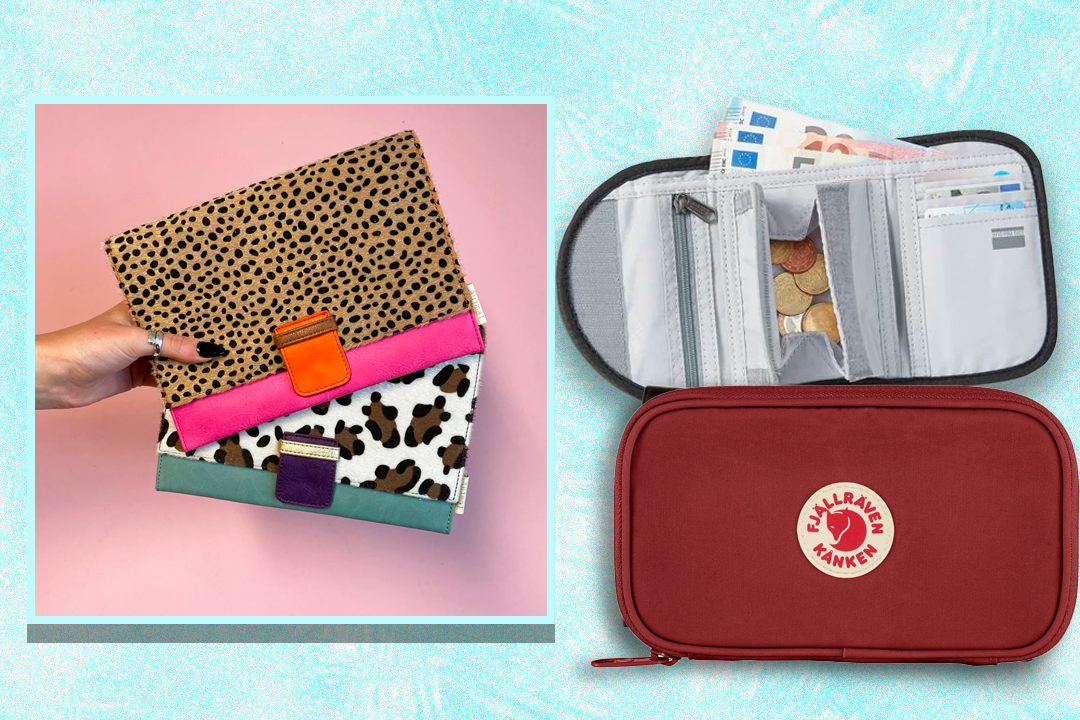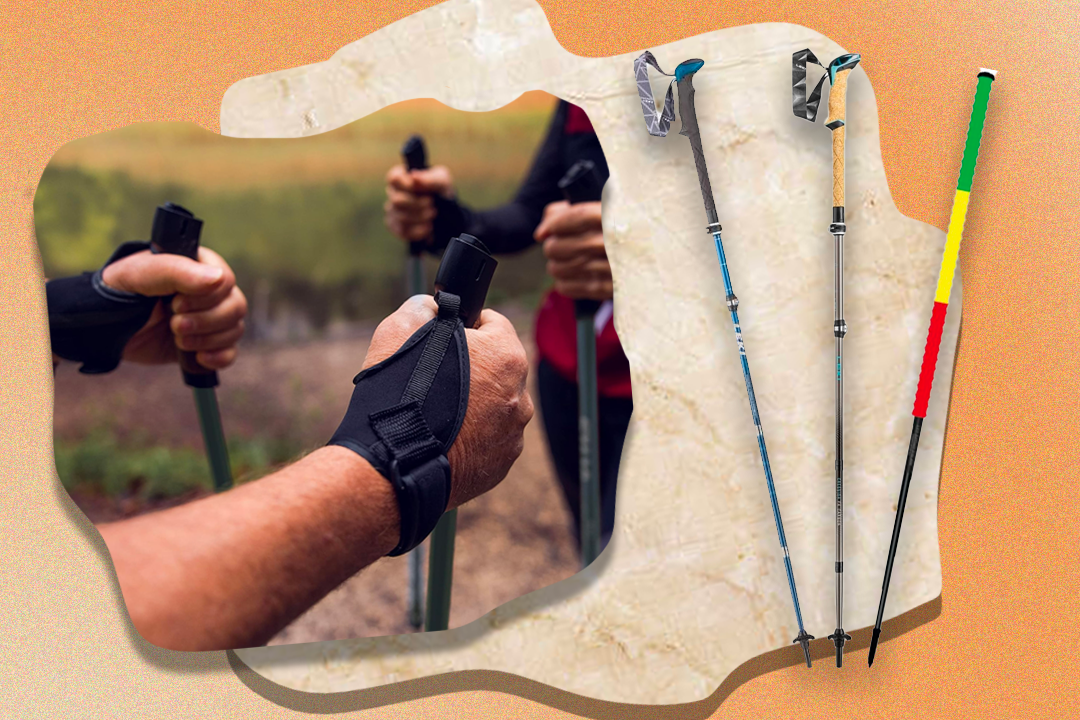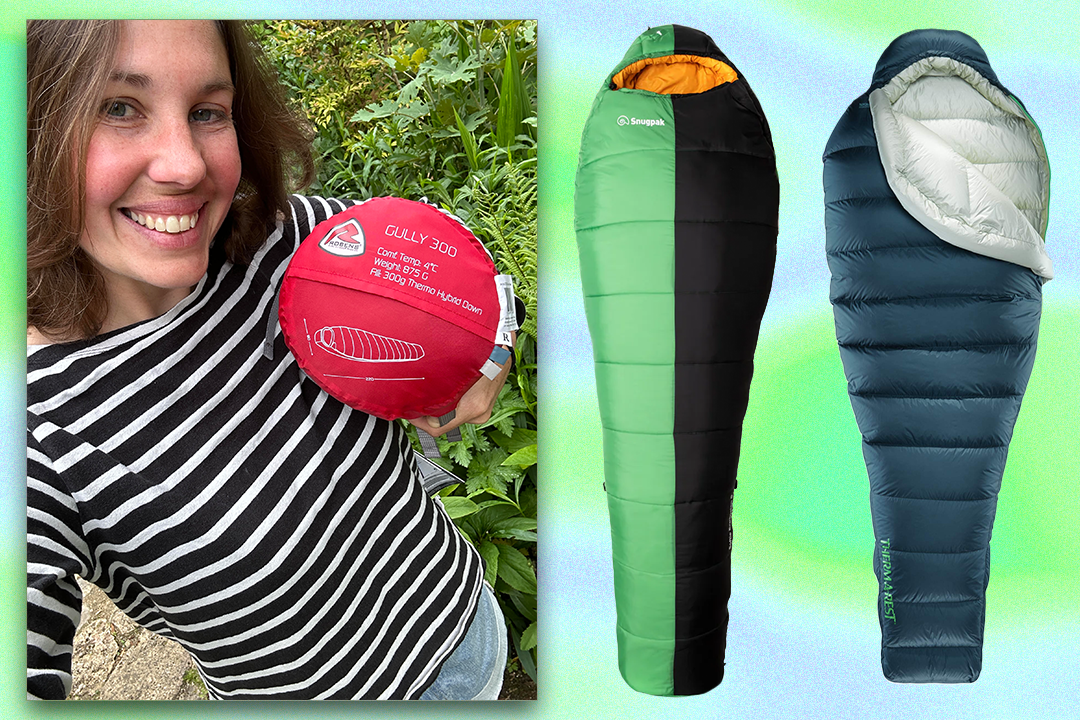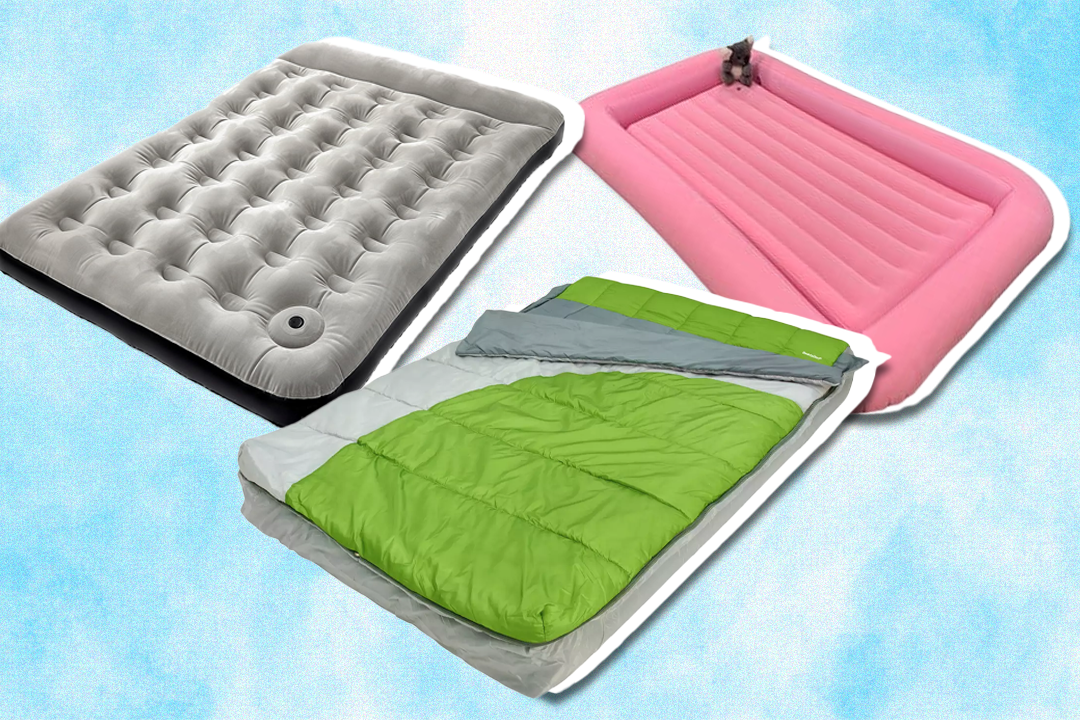
The Independent's journalism is supported by our readers. When you purchase through links on our site, we may earn commission. Why trust us?
10 best camping mats, tried and tested in the great outdoors
Ensure you snooze soundly, with our pick of the best camping mats
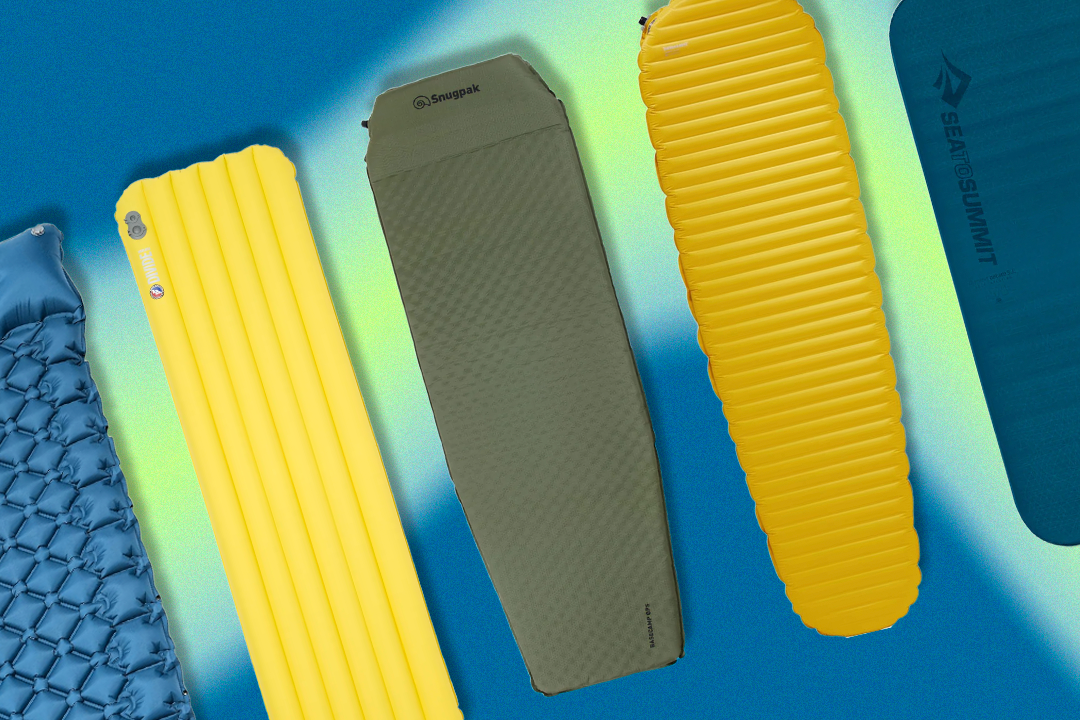
Beyond finding a reliable tent, a comfortable camping mat is one of the best ways to promote a good night’s kip while sleeping in the great outdoors. Comfort aside, the best camping mats will raise you off the ground and improve insulation, so you don’t end up tossing and turning and pining after your own bed.
Camping mats will, broadly speaking, fall into two categories: inflatable and foam. For multi-day camping trips, you’ll be best off with inflatable or self-inflating mats, as they tend to be more comfortable. Less bulky when packed away too, they’ll make a wise choice for backpackers and wild campers, but bear in mind they are at risk of puncturing.
More robust and less expensive than inflatable mats, foam camping mats can be ideal for festivals, budget campers or sleeping on rocky ground, as they can’t puncture. Whether you want to sacrifice some comfort for this, however, is something individual campers will want to weigh up.
Material aside, you should also take into account something called an R-value – this tells you how warm your new mat will be to sleep on (measured by its capacity to resist heat loss). The main job of a good camping mat is to keep you insulated from the cold ground, and the higher the R-value, the more insulating it’ll be. Broadly, an R-value below two is best for summer use, two to four will suit three-season use, and winter campers should look for four or above.
Don’t forget to think about the weight and size of your new camping mat, too. Hikers and wild campers will want a compact and lightweight mat (some compress as small as a water bottle and weigh less than 400g). Meanwhile, family and car campers can pack something bigger and bulkier that offers great comfort, or even go for a double camping mat that two adults can share.
How we tested
We packed our backpacks for camping trips, ranging from wild camping in northern Scotland to glamping on the Cornish coast, to test out these camping mats. We slept on each one for multiple nights in autumn and winter conditions, to test their warmth, all-night comfort and durability.
The best camping mats for 2024 are:
- Best overall – Therm-a-Rest neoair xlite NXT camping mat: £178, Amazon.co.uk
- Best budget buy – Nhowin self-inflating camping mat: £24.99, Amazon.co.uk
- Best self-inflating design – Vango comfort 7.5 double camping mat: £160, Vango.co.uk
- Best for comfort – Snugpak XL self-inflating camping mat: £86, Snugpak.com
Therm-a-Rest neoair xlite NXT camping mat

- Best: Overall
- R-value: 4.5
- Dimensions: 183cm x 51cm x 7.62cm
- Weight: 377g
- Storage dimensions: Packs as small as a conventional 1l bottle
- Seasons: All
- Why we love it
- Lightweight
- Excellent insulation in cold weather
For all-round performance in all seasons, we really rate Therm-a-Rest’s neoair xlite camping pad. This bright yellow mat is very lightweight at 377g, packs down small and offers solid quality, night after night. The surface of the pad is firm yet supportive, and we found this mat provides excellent insulation, even in cold weather, with an R-value of 4.5.
The xlite comes in a range of sizes, with models available to suit taller, shorter and wider campers. The price means this is an investment for dedicated wild campers and multi-day hikers – if you’re a casual camper, you may want to opt for something cheaper.
NHOWIN self-inflating camping mat

- Best: Budget buy
- R-value: N/A
- Dimensions: 196.5cm x 65cm x 9cm
- Weight: 950g
- Storage dimensions: 28cm x 10cm
- Seasons: Unspecified
- Why we love it
- Self-inflating
- Comfortable
- Pillow included
Many of the best air mats on the market are painfully expensive – not so in the case of NHOWIN’s self-inflating mat, which is a bargain at less than £30. This inflatable design has clocked up 4.9 stars on Amazon, and, after testing, we’d have to agree with its fans. This comfortable mat is lightweight (950g) and compact when rolled up. Once inflated (using the built-in foot pump), it provides an effective bed (although, side sleepers may need something thicker) with a brilliant pillow included. Poppers enable you to attach another of these mats to one side, to create a double mattress.
Mountain Warehouse roll mat
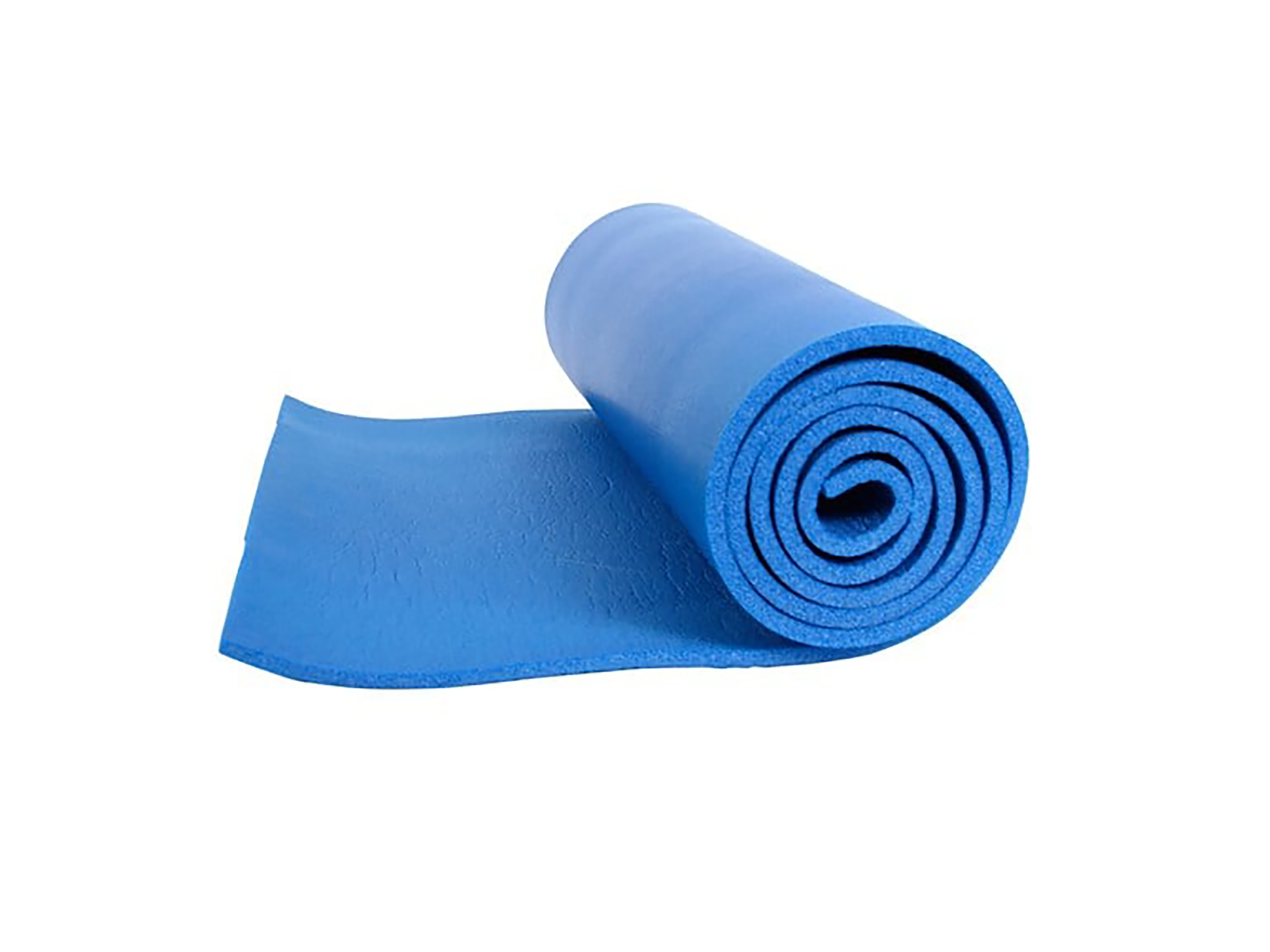
- Best: For less than £10
- R-value: N/A
- Dimensions: 180cm x 50cm x 0.8cm
- Weight: 230-235g
- Storage dimensions: 18cm x 50cm
- Seasons: Not specified
- Why we love it
- Ideal for rocky ground
- Affordable
- Take note
- Less comfy than an inflatable
Roll mats may not be quite as comfy to sleep on as inflatable mats, but they do have one redeeming feature: they’re nigh-on indestructible (unlike air mats, which, if pierced, will immediately deflate and be rendered useless). This means roll mats are great for use on rocky, uneven ground or for popping under an air mat for extra protection. Roll mats are also far more affordable than air mats: Mountain Warehouse’s simple but effective model costs less than £10, and is tough, insulating and long-lasting. For colder conditions, try Mountain Warehouse’s trek mat (£12.99, Mountainwarehouse.com), which has an aluminium layer that reflects back body heat.
Big Agnes divide insulated sleeping mat

- Best: For multi-day hikes
- R-value: 4
- Dimensions: 20cm x 13cm
- Weight: 652g
- Storage bag dimensions: 183cm x 51cm x 9cm
- Seasons: Spring, summer, autumn
- Why we love it
- Lightweight
- Easy to pack and carry
- Thermolite insulation
Big Agnes’s distinctive yellow divide mat boasts the excellent combination of being lightweight, well-insulated and pleasantly thick, while also packing away neatly into a compact storage bag. This makes it a good choice for multi-day hikes, when you don’t want to add too much weight to your backpack but also need a comfy mat to ensure you’re well rested on your adventures. It took a bit of puff for us to get this mat inflated, but the 9cm thickness combined with Thermolite insulation kept us warm and comfortable out on the trail, even in temperatures that hovered around freezing. With an RRP of £120, it’s pretty great value for a high-performing three-seasons camping mat.
Snugpak XL self-inflating camping mat
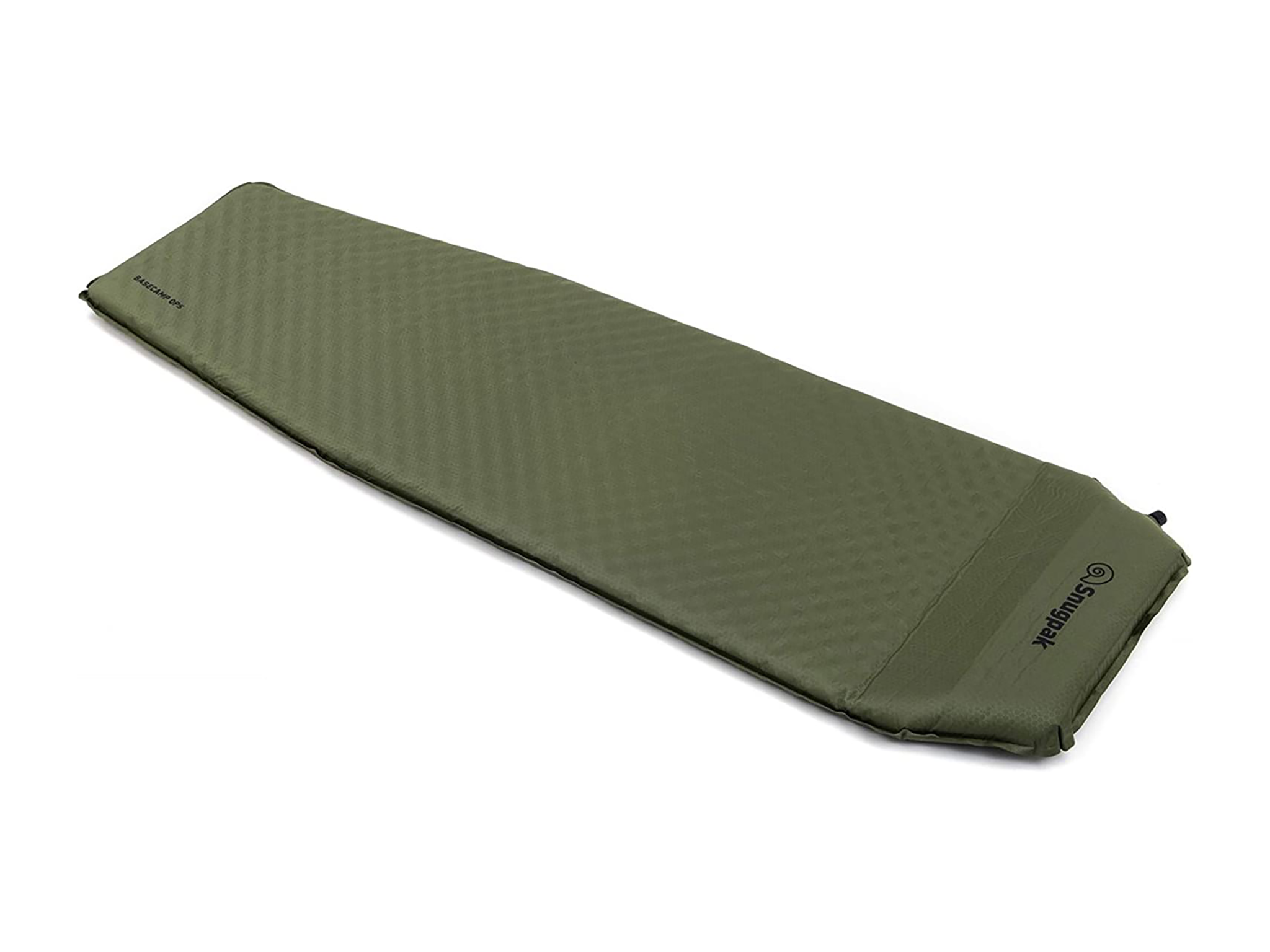
- Best: For comfort
- R-value: N/A (Snugpak uses a different testing method)
- Dimensions: 195cm x 62cm x 5cm
- Weight: 1.7kg
- Storage bag dimensions: 64cm x 25cm
- Seasons: All seasons
- Why we love it
- Extra long and wide
- Inflatable pillow
- Foam layer for protection on rocks
A comfy night’s sleep is built in to Snugpak’s XL mat. Extra long and wide, this design will make you feel like you’ve got plenty of space to stretch out, and a handy inflatable pillow (so you’ll never forget to bring one again) also helps to make this mat a treat to sleep on. While it isn’t quite self-inflating, despite its name, it does only take a few puffs to get Snugpak’s XL mat ready, and a foam layer adds welcome comfort and warmth as well as protecting you if you stretch out on rockier terrain.
Vango comfort 7.5 double camping mat
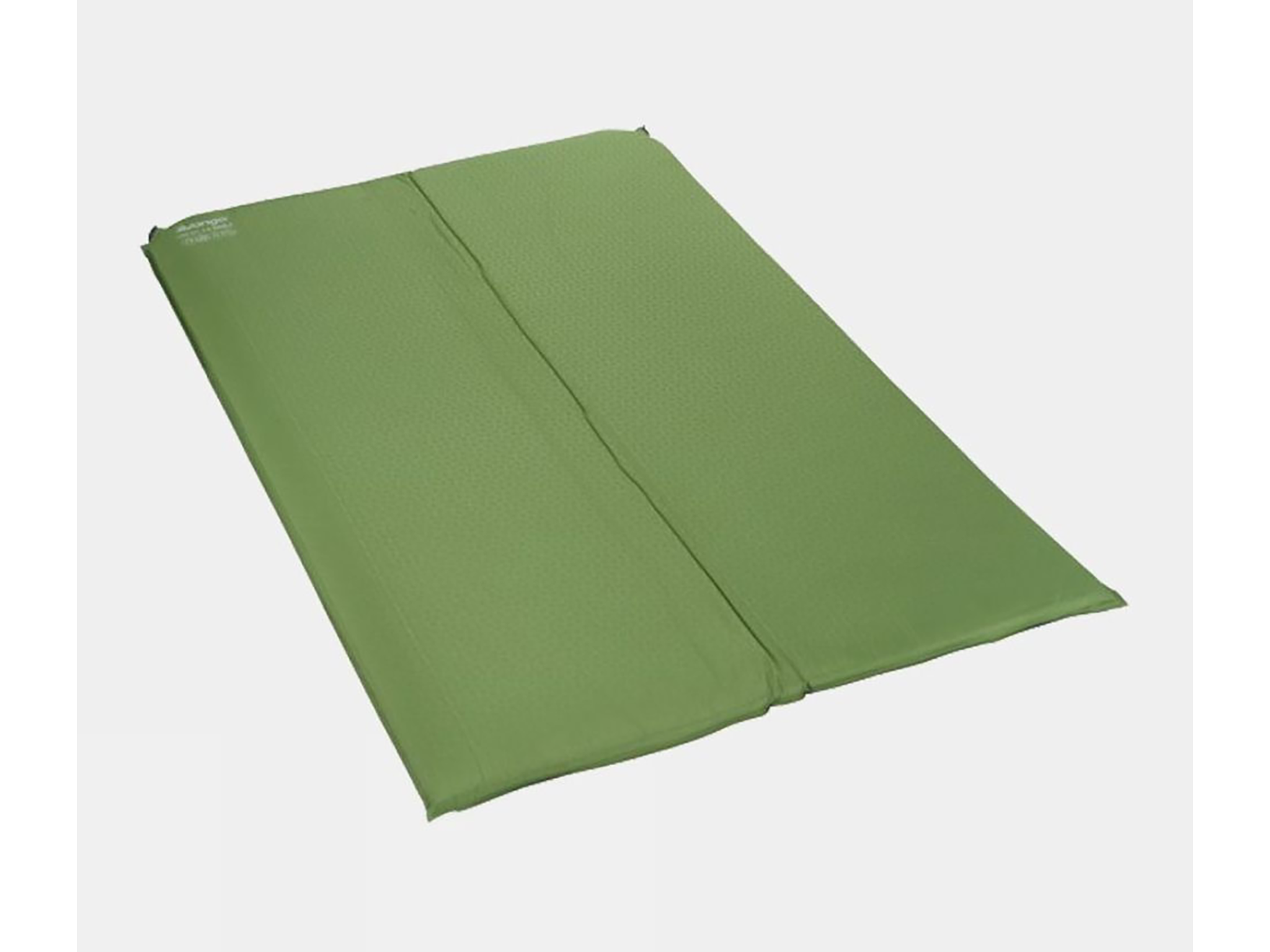
- Best: Self-inflating mat
- R-value: 7
- Dimensions: 200cm x 130cm x 7.5cm
- Weight: 5.47kg
- Storage bag dimensions: 64cm x 20cm
- Seasons: Unspecified
- Why we love it
- Self-inflating
- Soft-touch upper
Free yourself from the faff of footpumps on your next camping holiday with a self-inflating double mat. Open a valve and Vango’s comfort mat fills with air and is ready to go in seconds, or you can top it up quickly if you prefer a firmer sleeping mat. Once inflated, this design stays in shape all night long. We also love the soft-touch upper of the comfort mat, which helps sleeping bags stop sliding off in the middle of the night. However, it is worth mentioning that this mat isn’t as thick as some premium double designs, so, if you’re looking for an alternative to your bed at home, pick a thicker pad.
Outdoor Revolution camp star double self inflating mat
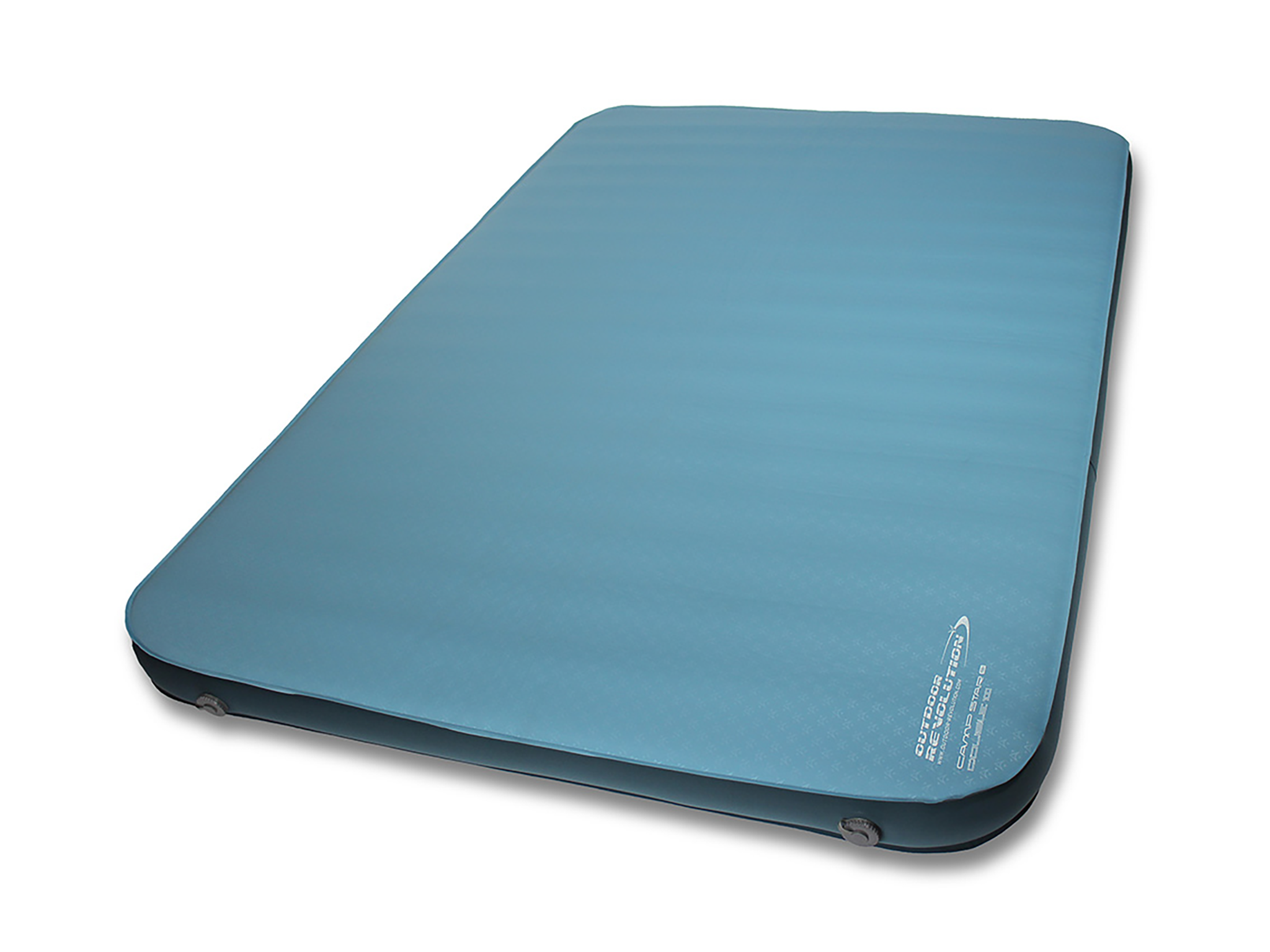
- Best: Double camping mat
- R-value: 6.1
- Dimensions: 201cm x 135cm x 10cm
- Weight: 6.7kg
- Storage bag dimensions: 73cm x 30cm x 28cm
- Seasons: Unspecified
- Why we love it
- Double size
- Self-inflating
- Take note
- Weighty at almost 7kg
If you’re cosying up with a fellow camper in a big family tent or fancy recreating your double bed, a self-inflating double mat is a clever choice. We rated the camp star double from Outdoor Revolution on test – it takes only a minute or two to inflate and combines a warm foam core with inflatable panels for a very comfy night’s sleep indeed, with plenty of support for two adults sharing. At almost 7kg, this mat is bulkier than most, so it’s best used on longer car camping holidays.
Sea to Summit comfort deluxe camping mat
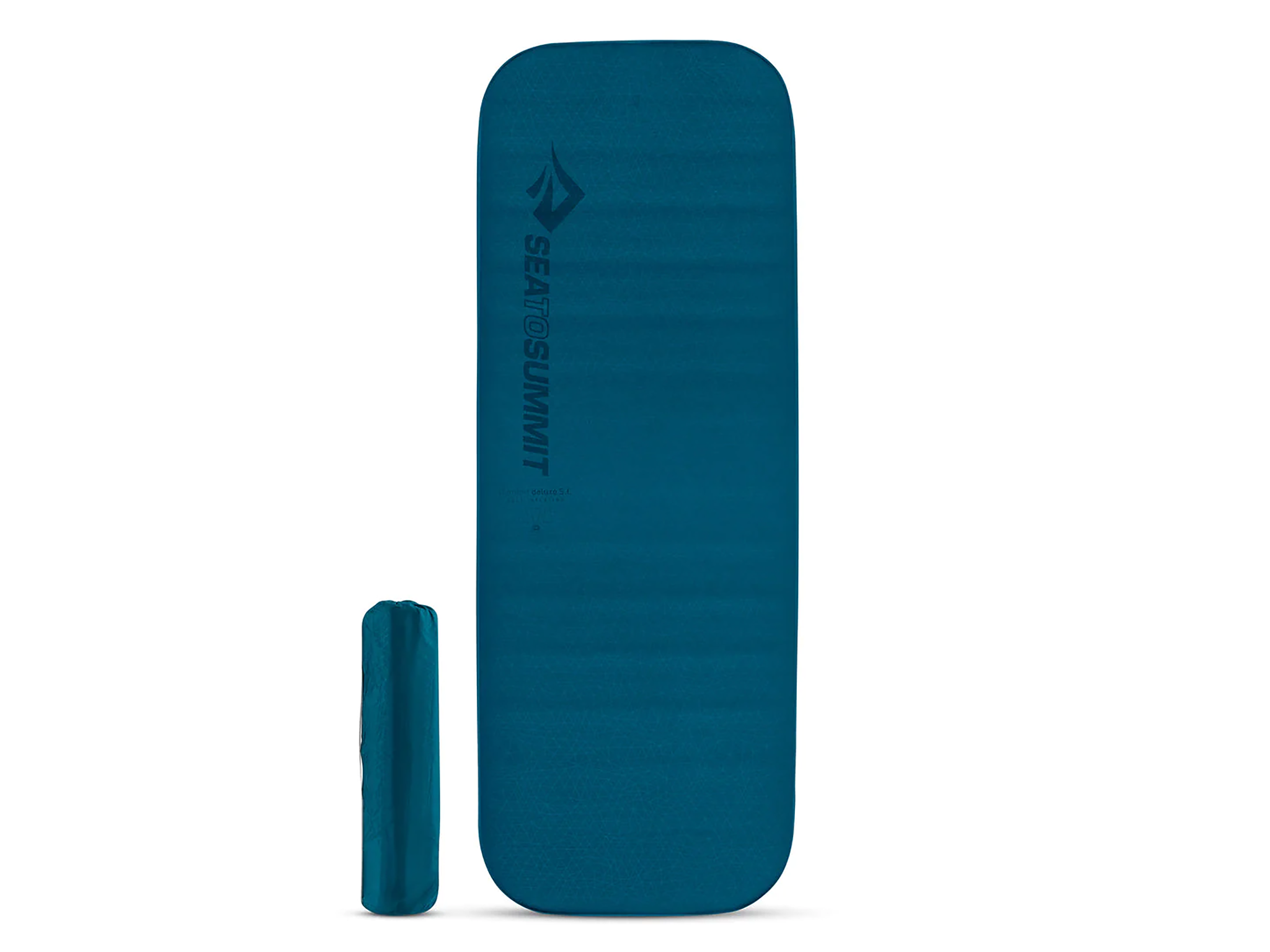
- Best: Luxury mat
- R-value: 6.5
- Dimensions: 183cm x 64cm x 10cm
- Weight: 1.995kg
- Storage bag dimensions: 18cm x 67cm
- Seasons: All seasons
- Why we love it
- 10cm thickness
- Ideal for campervans
Sea to Summit isn’t messing around when it sticks “comfort” and “deluxe” in the name of this rather sumptuous sleeping pad. A plush, mattress-like knit topper, four-season warmth and 10cm of thickness make this self-inflating single mat feel like a more portable version of your mattress at home. We also like that you can attach a Sea to Summit pillow to the mat, so that it stays put during the night. The comfort deluxe is ideal for tents but was actually designed with campervans in mind – it’d work brilliantly in both.
Outwell dreamcatcher single XL camping mat
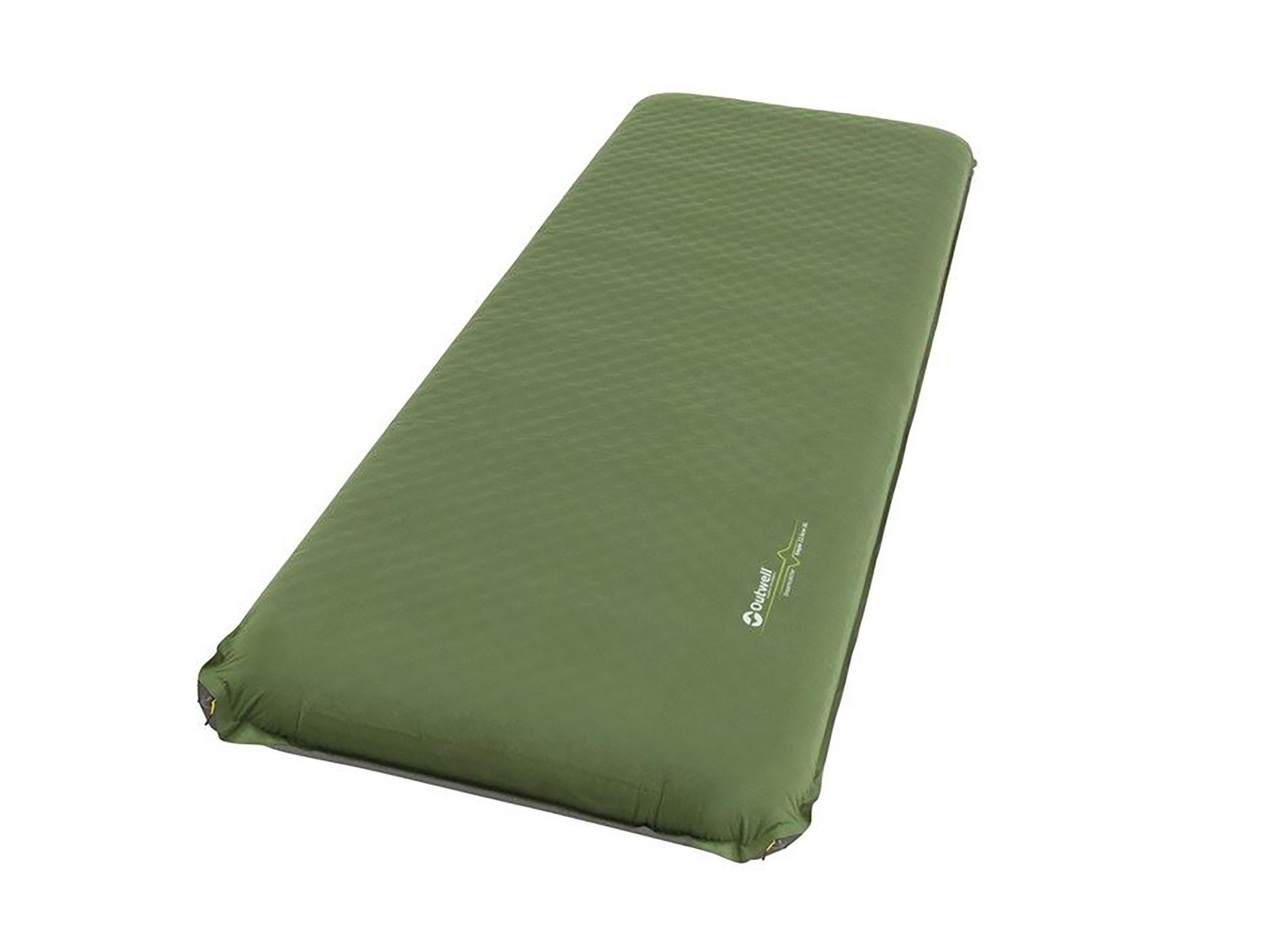
- Best: For single sleepers
- R-value: 7.5
- Dimensions: 200cm x 75cm x 12cm
- Weight: 3.3kg
- Storage bag dimensions: 78cm x 21cm
- Seasons: Unspecified
- Why we love it
- Extra-large design
- 10cm of depth
If you’re taller than average, tend to be a restless sleeper or just hate the restrictive feeling of some barely there camping mats, treat yourself to an extra-large design. Our pick of the pack is Outwell’s Dreamcatcher, which is a generous 200cm in length and 75cm wide, suiting most body types. It also has 10cm of depth, which keeps you well off the ground, even if you sleep on your side – no more achy shoulders or hips here – and stays inflated until morning. A treat for solo campers, the high R-value means you’ll only need one mat for year-round trips.
Robens iceshield camp 55 camping mat
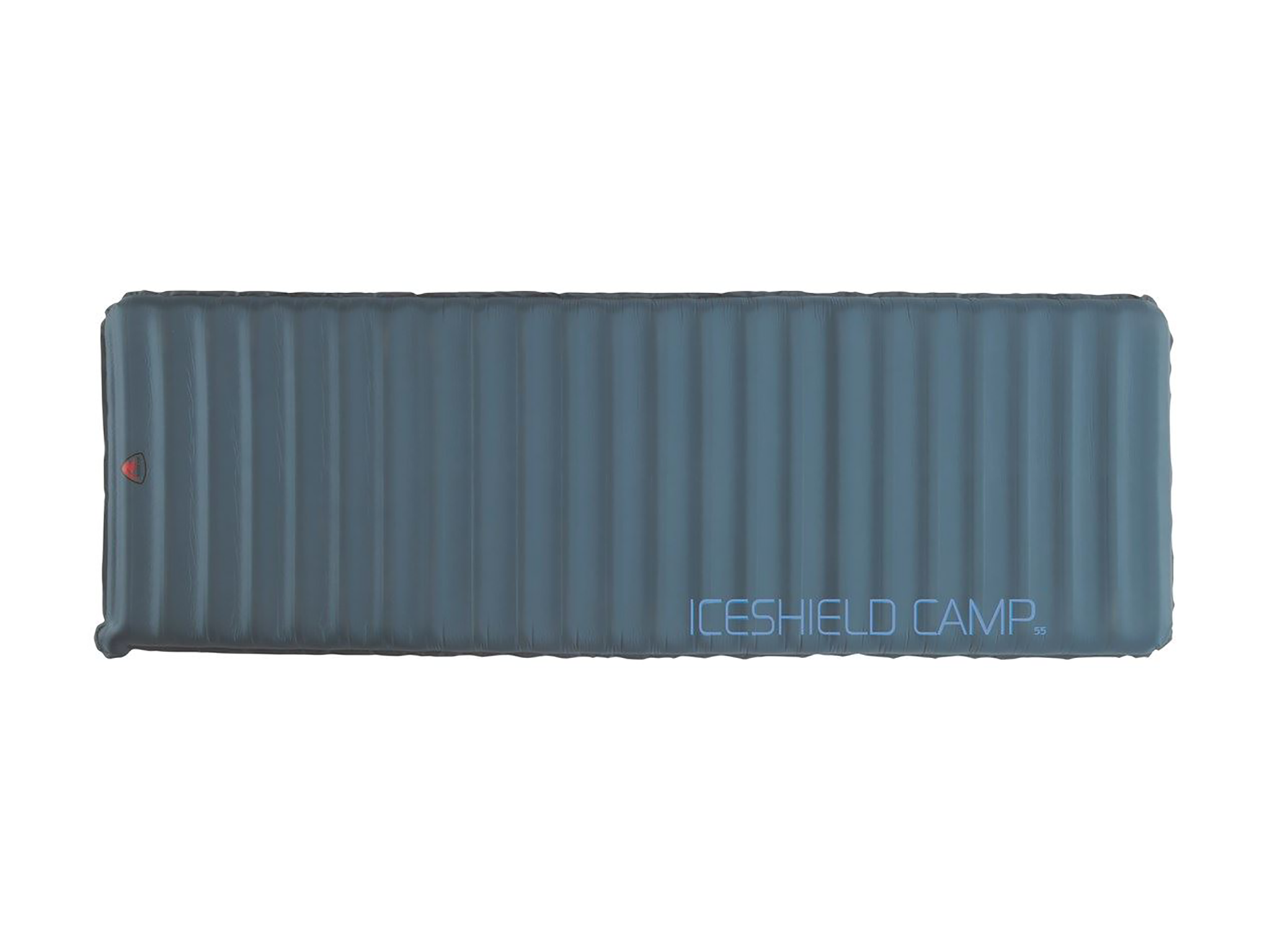
- Best: For easy packing on the go
- R-value: 4.2
- Dimensions: 195cm x 65cm x 5.5cm
- Weight: 1.075kg
- Storage bag dimensions: 32cm x 19cm
- Seasons: All seasons
- Why we love it
- Lightweight and easy to carry
- Tough and durable outer
- Take note
- Material is a little squeaky
A lot of mats that offer reliable warmth and pillowy comfort end up being heavy and hard to cart about, but that’s not the case in Roben’s new iceshield camp 35. At 1kg, it isn’t prohibitively heavy and it also deflates easily before packing away into a backpack. The iceshield also stood out on test for its great quality – the outer fabric is tough yet comfortable and the mat keeps its shape once inflated and feels like it’ll withstand years of sleeping under the stars. Be warned, light sleepers: the iceshield is slightly squeaky when you move.
Camping mat FAQs
Are self-inflating camping mats worth it?
A self-inflating camping mat contains a compressed inner foam that expands into shape when a vacuum valve is released, enabling air to flow into the camping mat.
While they’re heavier and bulkier than pure air mats, they come with a few added benefits. For one, you save a lot of time and effort blowing them up. Most self-inflating camping mats will let you add a few more breaths to increase the firmness of the padding, but they’re typically ready to use in a few minutes.
They’re also more durable than standard inflatables, as a puncture doesn’t render them useless, while the inner foam reduces noise and adds extra insulation and warmth. So, if all of this sounds like music to your ears, a self-inflating camping mat could well be worth the investment.
The verdict: Camping mats
When it comes to comfort that won’t break the bank, we rate the Therm-a-Rest neoair xlite NXT camping mat. If you’re after a budget-friendly option, the NHOWIN self-inflating camping mat is lightweight, compact, and a steal at less than £30 but, if your wallet stretches, Sea to Summit’s comfort deluxe is seriously comfortable.
Want even more comfort while camping? Take a look at our guide to the best airbeds
Voucher Codes







